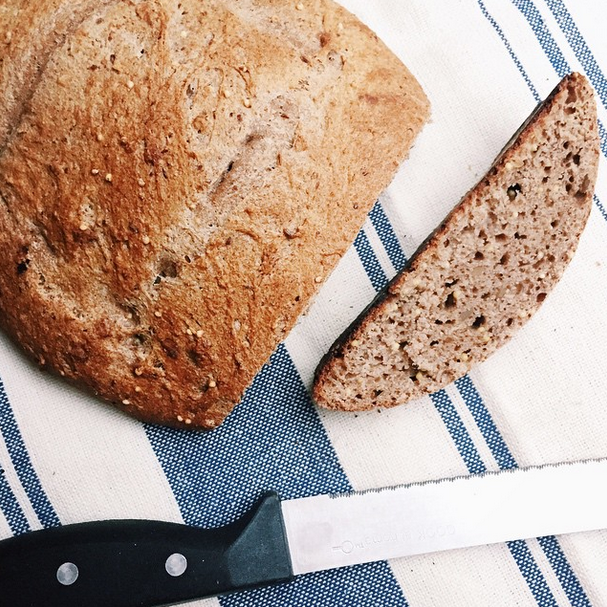Share This
Consumers are demanding higher quality, more flavorful foods than ever before, a fact particularly evident in the surge of artisan, whole grain breads. But when exactly did whole grain loaves become the new standard?
The past 5-10 years have seen remarkable progress in whole grain availability and appeal, particularly in baking. Forward thinking bakers and chefs, such as Chad Robertson and Peter Reinhart, helped bolster the trend toward whole grains, as their artisan whole grain loaves won widespread acclaim. By using traditional, sourdough fermentation methods, and a high-moisture dough, these visionaries were able to coax more flavor out of the kernel, and reshape long-held perceptions about what the staff of life should look like and taste like.
Eying a trend, food manufacturers soon followed suit, and in 2010, whole grain bread sales surpassed that of white bread. Momentum increased in 2012 with implementation of the Healthy Hunger Free Kids Act, which mandated whole grains in school lunchrooms across the country; with their kids onboard, many families began eating more whole wheat bread at home, too. Consumers haven’t turned back. In fact, our 2015 Whole Grain Consumer Insights Survey of US adults found that people eat whole grain bread and cereal more often than their refined counterparts.
The bran and germ in whole grains add a complex, more interesting layer of flavor to baked goods that just can’t be duplicated with refined, commodity flour. But taste is just one piece of the puzzle. Whole grains are also offering a unique path for bakers and food producers to connect with the earth, and support local food systems and economies.
Speaking at our Whole Grains Away from Home conference in September, Greg Wade, the head baker at Publican Quality Bread, explained that, “We’re trying to put out as much whole grain [bread] as possible, for a number of different reasons — first and foremost being flavor, second of all, supporting our local community and our local food shed.” According to Wade, who purchases locally grown grains to bake with, “These landrace wheats are part of a regenerative, biodynamic farming system. It’s not taking nutrients out of the soil; we’re actually building nutrients back into the soil.”
Similarly, Dr. Stephen Jones, director of the Bread Lab at Washington State University, informed our conference audience of a growing movement to breed wheat and barley for flavor and nutritional qualities, rather than just yield, color, and protein content. Just as our vision of a loaf of bread has evolved to embrace more diversity, so has our appreciation for wheat. Dr. Jones, in fact, describes his work as “pairing the proper product with the proper wheat” to best suit the desired taste and texture – all while supporting local wheat varieties.
A one-size fits all approach is rarely a long term solution to anything, so it is exciting to watch chefs, bakers (both artisan and commercial), and authors continue to innovate with the complex, yet rewarding properties of whole grain flour. If you’re ready to roll up your sleeves and start experimenting, here are some whole grain cookbooks to get you started. (Kelly)


Add a Comment